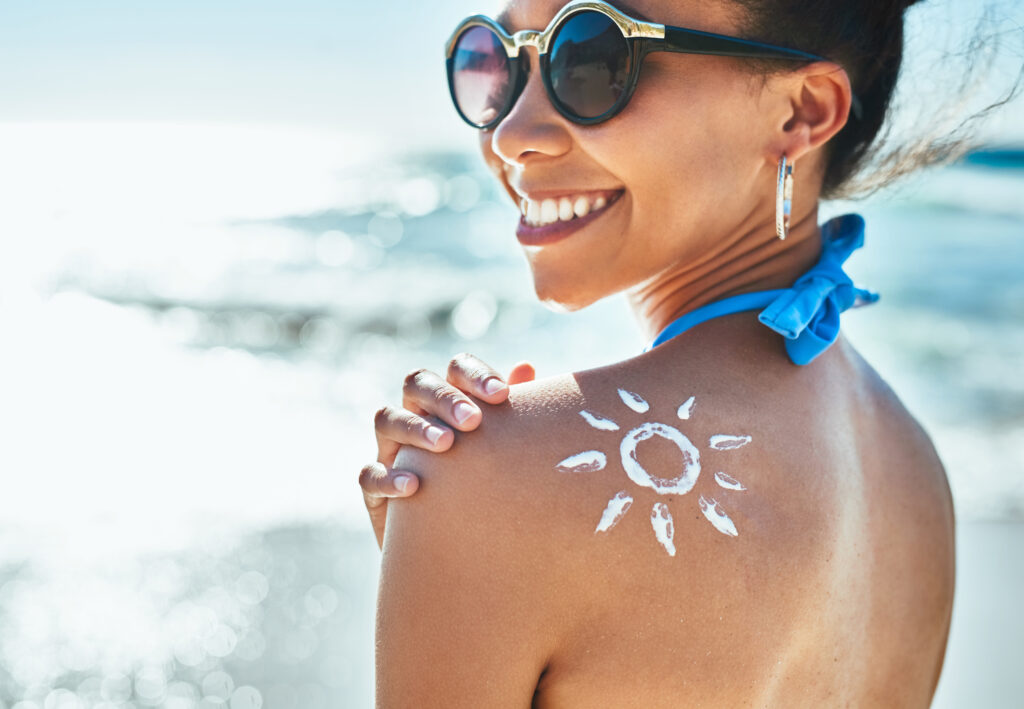Photoprotection Benefits for Skin of Color Populations
The skin of color population in the United States (and globally) is rapidly growing [1]. It is projected by 2050, individuals of non-Caucasian multi-racial descent will comprise more than 50% of the population [1]. This increased diversity requires a greater understanding of racial and ethnic variations in the prevalence, clinical presentation, and optimal treatment approaches to medical and aesthetic dermatologic concerns.
Compared to their Caucasian counterparts, skin of color individuals (Fitzpatrick phototype III and above) present with darker pigmented skin due to increased epidermal melanin content, which provides some protection from visible signs of aging, such as wrinkles and fine lines, plus lowers the risk of some skin cancers [2-3]. However, individuals with higher skin Fitzpatrick phototypes are more sensitive to sunlight-induced skin pigmentation and are susceptible to dyschromia, such as post-inflammatory hyperpigmentation and melasma [2-3].
Historically, skin of color communities are less likely to engage in sun protection behaviors, such as shade seeking and using sunscreen [4-5]. Possible reasons include a false sense of security that melanin provides sufficient protection, and from issues related to sunscreens, such as white cast residual after application [4-5]. In addition, as most of the studies and communications on the benefits of sunscreen have historically focused on Caucasian skin, there is a need for more knowledge and education on the short and long-term impact of daily photoprotection on individuals with higher skin Fitzpatrick phototypes.
Dr. Rebat Hadler, a key opinion leader in skin of color dermatology, in collaboration with L’Oreal Research & Innovation previously demonstrated that 8-week of daily-use of La Roche Posay Anthelios Ultra Sunscreen SPF 60 reduced the appearance of pre-existing facial dyschromia in skin of color subjects from African American and Hispanic decent; interestingly, subjects observed skin tone improvement on their hands after just 4 weeks of daily application [6].
In a more recent publication[DH1] , Dr. Pearl Grimes, one of the most impactful skin of color dermatology expert, partnered with Dr. Rebat Halder and L’Oreal Research & Innovation to investigate the long-term potential benefits of daily photoprotection in skin of color patients. They demonstrated that a year long daily use of a sunscreen with SPF 30 & PPD 20 (with both UVB and UVA protection) provides significant benefits in reducing hyperpigmentation, fine lines and rough texture, as well as improving overall skin quality in Hispanic women of skin phototypes IV and V, relative to women of similar age and phototypes, who did not add the sunscreen to their daily routine [7]. Through histological analysis of biopsies collected in sunscreen and control subjects, they also show the benefits of daily protection in preventing physiological changes beneath the skin surface that are associated with poor aging signs [7]. These findings help advocate for daily photoprotection for all skin tones and confirm that effective sunscreen use is not only protective and beneficial for light skin population, but is also critical in improving and preventing dyschromia for skin of color patients.

Grimes P, et al. J Drugs Dermatol. 2020 Mar 1;19(3):236-242.
The skin of color population in the US and worldwide is on the rise and the clinical profile of the average patient presenting to the dermatologist is changing. Research exploring new molecular pathways, and photoprotection strategies and benefits for sun protection, such as the two mentioned studies, are crucial for building a more complete suncare strategy and advocacy that is more inclusive for skin of color communities.
References:
- Colby SL, el at. Projections of the Size and Composition of the U.S. Population: 2014 to 2060. March, 2015. https://www.census.gov/content/ dam/Census/library/publications/2015/demo/p25-1143.pdf.
- Grimes P, et al. Self-reported characteristics associated with the signs of facial aging by race/ethnic group and Fitzpatrick skin type among a diverse, multinational sample. 74th Annual Meeting of the American Academy of Dermatology. 2016.
- Alexis AF, et al. Ethnicity and Aging skin, J Drugs in Dermatol. 2017;16:s77–80
- Zheng Q, et al. J Drugs Dermatol. 2019 Mar 1;18(3s):s121-123.
- Battie Q, etl a. J Drugs Dermatol. 2013 Feb;12(2):194-8.
- R, et al. Evaluation and Effectiveness of a Photoprotection Composition (sunscreen) on subjects of Skin of Color Journal of the American Academy of Dermatology JAAD May 2015 Volume 72, Issue 5, Supplement 1, page AB215
- Grimes P, et al. J Drugs Dermatol. 2020 Mar 1;19(3):236-242.
[DH1]https://jddonline.com/articles/long-term-benefits-of-daily-photo-protection-with-a-broad-spectrum-sunscreen-in-united-states-hispan-S1545961620P0236X/
Author
-

Dr. Hawasatu Dumbuya is a trained scientist with expertise in cell biology and signaling, plus clinical research for skincare product evaluation. Currently leading the Medical and Scientific Affairs for La Roche Posay, her work has focused on integrating methodologies and innovative ways for clinical design and testing to bring forth new product knowledge, plus sustain inclusive evaluation programs. She has published in peer-reviewed dermatology literature, and her work has been featured and presented in various educational programs with diverse audiences and communities.
View all posts





